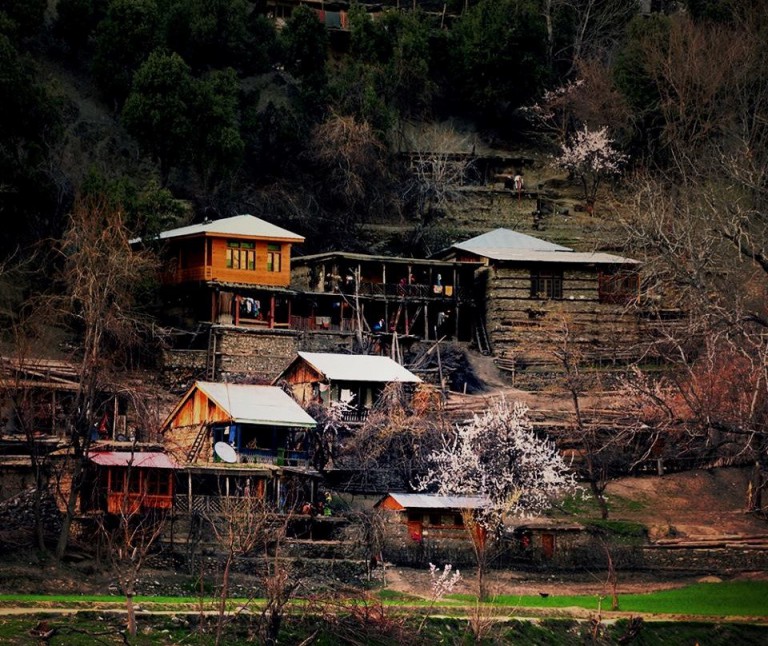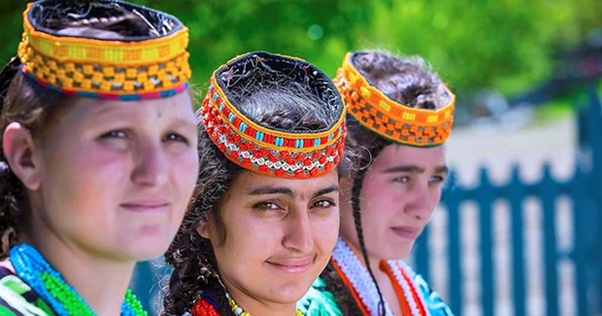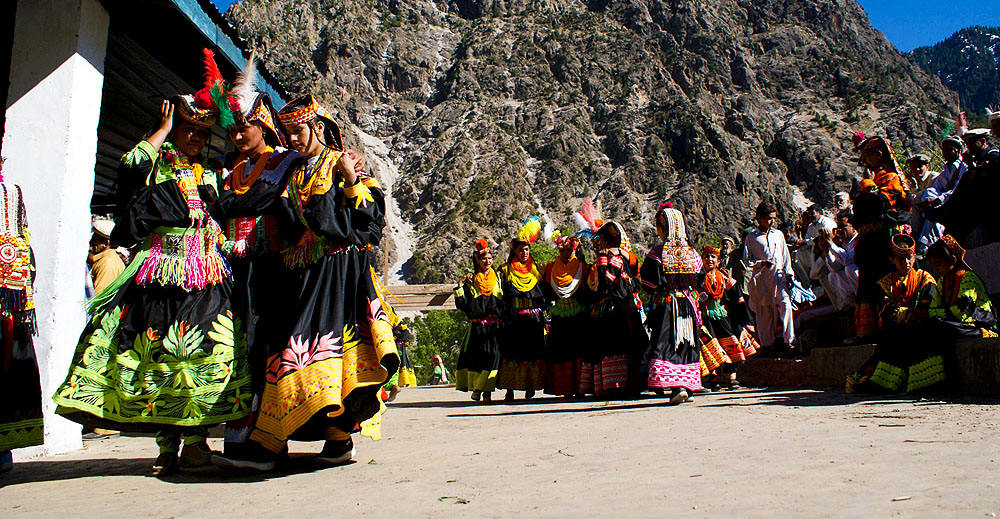The ratio of the Kalash people who have no information about their origin is 5%The remaining 5 % link their origin to the Arabs who first came to Afghanistan and from Afghanistan to Chitral. The Kalash songs and folk stories tell that the people came from Tsiam and Yarkhand.
The Kalash are an indigenous ethnic group living in the three narrow and secluded valleys of Bumburet, Rumbur and Birir, in the Chitral district of the Khyber Pakhtunkhwa province of Pakistan. The Kalash have a unique culture of their own, which is considered to be one of the oldest living cultural heritages of the world.
The Kalash speak an archaic form of Indo-European Dardic language called Kalash language. The Kalash have a rich tradition of folklore, epic and love songs in this old language, consistent with a high standard of indigenous experience.





